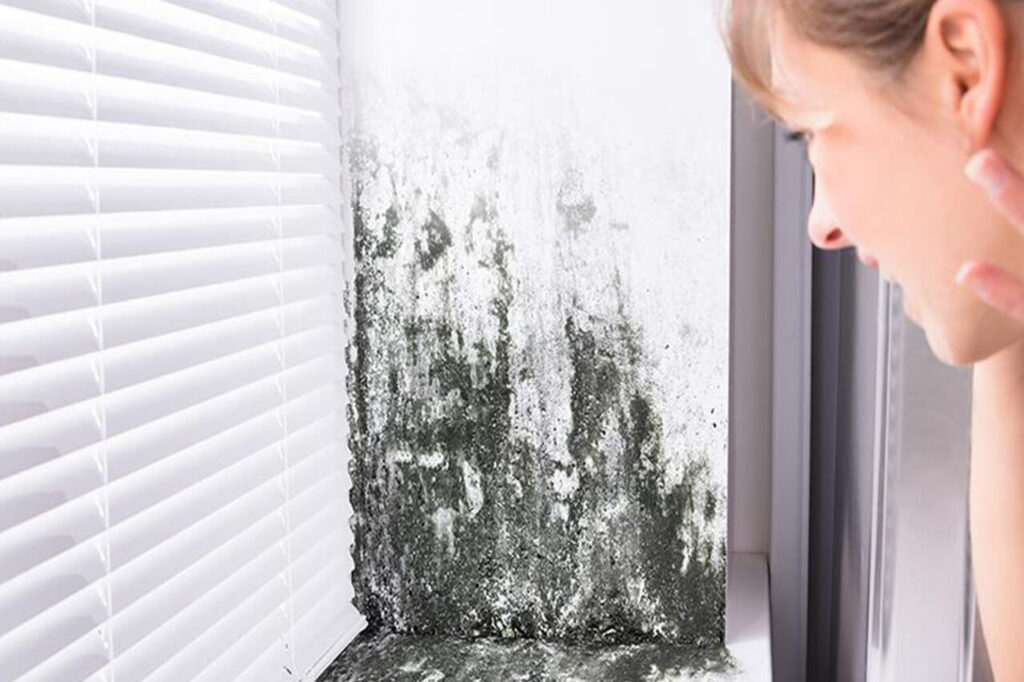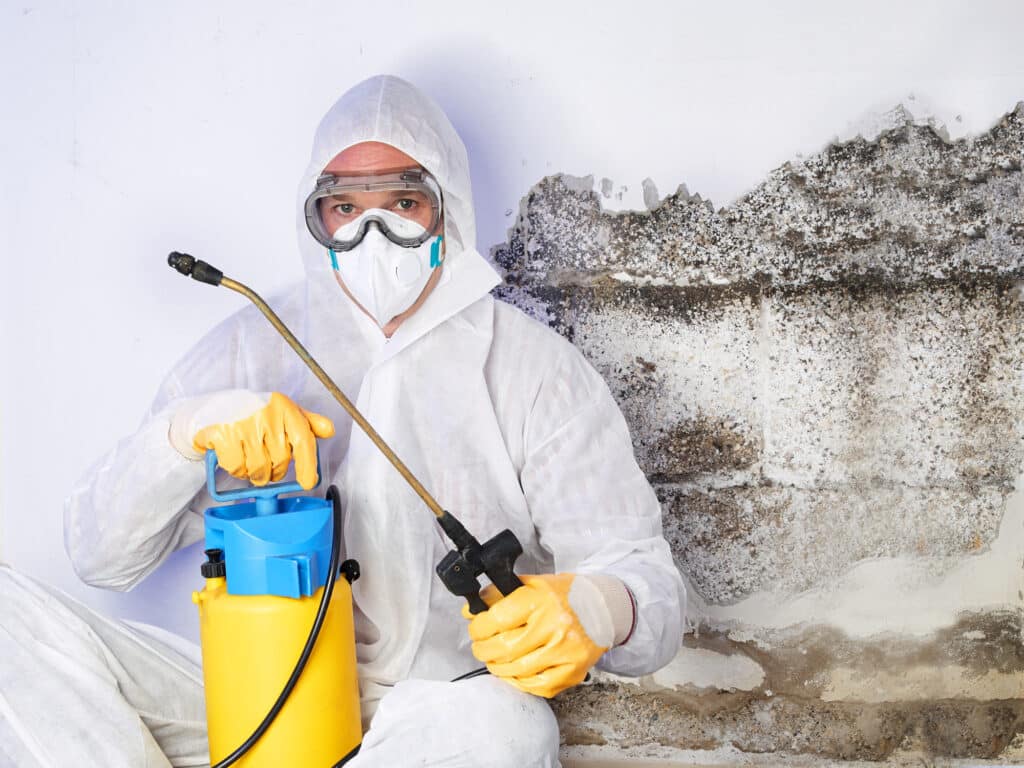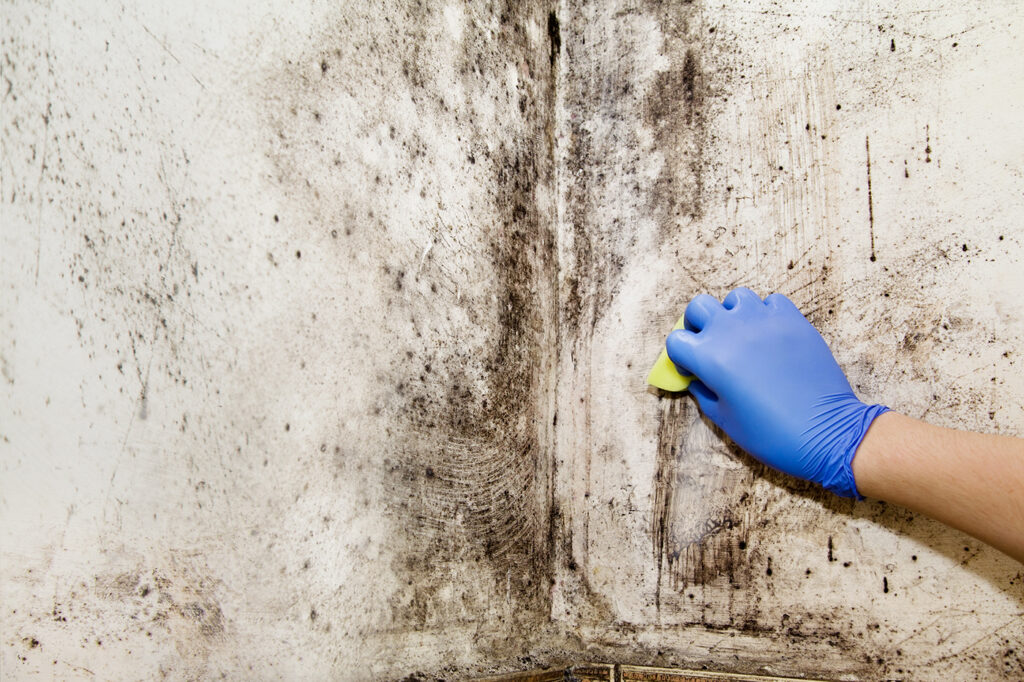
Noticing black splotches on your windows and a musty odor permeating the air? That’s mold. The unsettling knowledge that these unwelcome guests pose a potential health risk. Stop mold in its tracks! This guide unveils secrets on how to prevent mold on your windows.
Discover how to control moisture, improve ventilation, and clean your windows to prevent unsightly mold and create a healthier home.
Understanding the Mold
Before we begin, it’s crucial to understand what fuels mold growth. Mold thrives in damp, stagnant environments. It feeds on organic matter, such as dust, dead skin cells, and the materials used in window frames and sills. Moisture is the key culprit, attracting mould-like moths to a flame.
Here’s a breakdown of the conditions that create a haven for mold:
1- High Humidity:
Humidity levels above 60% are ideal for mold growth. Activities like showering, cooking, and laundry drying contribute to increased humidity.
2- Poor Ventilation:
Stagnant air, allowing moisture to build up, is a breeding ground for mold spores.
3- Low Temperatures:
Mold thrives in cooler environments. During winter months, condensation forms on windows, creating a prime location for mold to flourish.
4- Lack of Sunlight:
Mold prefers shady areas. Limited natural light can hinder drying and contribute to moisture buildup.
Removing Existing Mold Growth

Before building your mold-prevention plan, addressing any existing mold infestation is essential. Here’s a step-by-step approach to evicting those unwelcome tenants:
Stay Protected:
Mold spores can irritate the lungs. Wear personal protective equipment (PPE) during cleaning, such as gloves and a mask.
The Natural Way:
White vinegar is a natural disinfectant and a great first defense against mold. Mix equal parts white vinegar and water in a spray bottle.
Scrub It Out:
Spray the affected area with the vinegar solution. Let it sit for 5-10 minutes to allow the vinegar to penetrate the mold. Scrub the mold with a stiff brush or cloth, ensuring you reach all crevices.
Banishing the Damp:
Open windows and doors to promote ventilation and allow the area to dry completely. Consider using a fan to speed up the drying process.
Creating an Inhospitable Environment: Multi-Pronged Defence

When you evict the mold residents, it’s time to make your windows immune to future toxins. Here’s a multi-pronged approach to creating a mold-resistant environment:
Fresh Air:
Make fresh air your best friend. Open windows throughout the day, even in colder months, as long as the temperature isn’t very low. Aim for at least 15-20 minutes of ventilation per room. Use trickle vents on your windows for continuous air circulation. Do this, especially during colder months when you shut windows for extended periods.
Warmth:
Mold prefers cool, damp conditions. Maintain a comfortable indoor temperature, especially during winter. Aim for a temperature between 68°F and 78°F (20°C and 26°C). This reduces condensation on windows and minimizes the risk of mold formation.
Dehumidifier:
Dehumidifiers act as mold kryptonite. They remove excess moisture from the air, creating an environment where mold can’t survive. Consider investing in a larger electric dehumidifier for a broader impact. Or, opt for several disposable dehumidifiers in moisture-prone areas like bathrooms and kitchens. Empty the dehumidifier’s water reservoir regularly to maintain its effectiveness.
Advanced Mould Prevention Strategies

Other measures can further strengthen your defenses:
Plant Placement:
Houseplants are great for adding life to a space, but their moisture-releasing nature can be detrimental near windows. Move your leafy friends away from the windowsill—a few feet back into the room or on a sturdy plant stand is ideal.
Window Covering:
Specific window treatments can trap moisture and contribute to mold problems. High-humidity areas like kitchens and bathrooms are prone to these problems. Avoid fabrics like heavy drapes that can trap moisture.
Opt for waterproof and easy-to-clean window coverings. Consider investing in blinds or shutters made from faux wood or vinyl. They are designed to resist moisture and mold growth. Ensure you angle blinds and shutters downwards. This will help promote airflow and prevent water pooling.
Double Glazing:
Single-pane windows are more susceptible to condensation, which fuels mold growth. Upgrading to double-glazed windows creates an insulating barrier, reducing heat loss in winter. It will also keep your home warmer and cut condensation on the inner pane.
Double-glazed windows represent a significant investment. The long-term benefits of energy efficiency and mold prevention can be significant.
Investigate Ventilation Issues:
Poor ventilation in specific areas can create a breeding ground for mold. Check for blocked vents, clogged extractors fans, or any other problems. They might be hindering proper air circulation. Address any ventilation problems on the spot. It will help you prevent them from contributing to mold growth.
Identify and Address Leaks:
Leaks around windows can introduce excess moisture and create ideal conditions for mold. Inspect windows regularly. Look for signs of water damage, such as peeling paint, cracks, or warped frames. Address any leaks promptly to prevent them from becoming a mold haven.
Control Indoor Activities:
Cooking, showering, and drying laundry all contribute to indoor humidity. Using extractor fans in kitchens and bathrooms removes moisture during these activities. After showering or cooking, consider opening windows for a short time. This will allow excess moisture to escape.
Maintaining the Upper Hand: Ongoing Vigilance
Mold prevention is an ongoing battle, not a one-time victory. You can reduce Mold growth by incorporating these strategies into your daily routine.
Regular Inspections:
Schedule regular inspections of your windows. Inspect areas prone to condensation or dampness, such as north-facing walls or windowsills. Look for any signs of mold growth, such as discoloration, musty odors, or visible spores. Early detection is critical to preventing the spread of mold.
Reduce Indoor Humidity Levels:
Check indoor humidity levels with a hygrometer. Aim to maintain humidity levels below 60%. Here are some extra tips for reducing humidity:
Air Out Clothes Outdoors:
Whenever possible, dry laundry outdoors instead of using a clothes dryer indoors. These places can increase humidity levels.
Take Shorter Showers:
Shorter showers generate less steam, leading to less moisture in the air.
Invest in Indoor Plants:
Certain plants, like peace lilies and spider plants, contain air-purifying properties that can help absorb excess moisture from the air. But remember to place these plants away from windows. Otherwise, they’ll create a damp microclimate.
Address Underlying Issues:
Sometimes, mold growth can cause a deeper problem. For example, structural leaks, poor insulation, or inadequate ventilation in a specific area can occur. If you notice persistent mold growth, investigate and address potential underlying causes. If the problem persists, you must involve a professional, such as a building inspector. They will help you identify and fix the root cause of the moisture problem.
Live with Windows, Not with Mould!
Follow these comprehensive strategies! Yes, you can get rid of the mold and reclaim your windows! Remember, a proactive approach is key. With proper ventilation and addressing any moisture issues, you can create a healthy environment in your home—a home free from the unwelcome presence of mold.
Bonus: Extra Tips
Cleaning Window Treatments:
Clean your window treatments regularly, especially in moisture-prone areas like kitchens and bathrooms. This helps prevent dust and dirt buildup, which can breed mold.
Natural Light Power:
Maximize natural light in your home when possible. Sunlight has natural antifungal properties. It can also help dry out damp areas, making them less hospitable to mold growth.
Consider Air Purifiers:
Air purifiers equipped with HEPA filters can help capture mold spores circulating in the air. They are not a substitute for proper ventilation and moisture control, but they might be helpful.
Professional Help:
Seek professional help when dealing with a large or persistent mold infestation. If you suspect a hidden moisture problem, consult a mold remediation company. They have the expertise and equipment to remove mold and check the underlying cause.
Conquer Condensation and Keep Mould at Bay!
Are you dreading unsightly black spots in your bathroom or that musty smell in the basement? Mold, also spelled mold, can be a real nuisance. But fear not! This guide will equip you with strategies to prevent mold growth in your home. Take a comprehensive approach and create a comfortable, mold-free environment for your home.
With the knowledge you’ve gained, you’ll create a healthier and more pleasant living environment.
Remember, a well-rounded defense is the best defense!
Explore our website for further articles on maintaining a healthy home environment, including:
- Are you seeking a stylish and functional solution for your grand openings? Consider installing plantation shutters! Please read about them here: Plantation Shutters for Sliding Glass Doors.
- Stop struggling with window treatments for your sash windows! This comprehensive guide explores all the options, making navigation a breeze! Please read it here: Innovative Treatments for Sash Windows.
- Learn how to keep your home cool naturally! Shutters and blinds play a crucial role in this strategy. Please read it here: How Shutters and Blinds Can Prevent Overheating.
